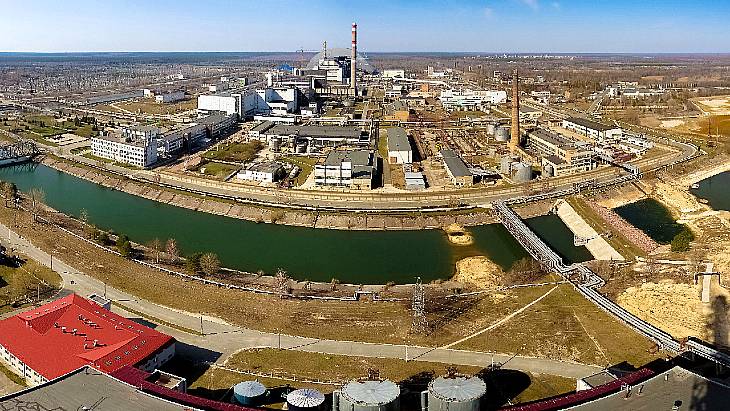
The ratification of the framework agreement allows for the creation of a mechanism for managing the activities of the International Chernobyl Cooperation Account (ICCA), which include the work on making safe and dismantling the unstable structures of the original shelter built at pace after the 1986 accident. The operator of the Chernobyl site (SSE ChNPP) added: "It is also important that these projects will be aimed at eliminating the damage caused by the invasion of the armed forces of the Russian Federation, in particular, at restoring safe conditions at the Chernobyl Nuclear Power Plant, in the exclusion zone, as well as at other nuclear installations and radioactive waste management facilities in Ukraine."
Speaking in the Verkhovna Rada (the Ukrainian parliament) Ukraine's Minister of Environmental Protection and Natural Resources, Ruslan Strilets, said that following the start of the war, Ukraine had asked for the structure of the fund to be changed and already 18 countries had contributed EUR14 million (USD15.2 million), with an expectation that the amount would double once the law was ratified. The funds will be used "to restore equipment lost during the occupation ... improve conditions for employees who work in difficult conditions today, and purchase the necessary fire-fighting equipment to ensure the preservation of valuable ecosystems".
The ICCA was established in November 2020 by the EBRD at the Ukrainian government's request to support a comprehensive plan for Chernobyl. The EBRD said its remit has been widened since the start of the war in 2022 "to support the restoration of nuclear safety, security and decommissioning abilities" within the exclusion zone and also "permits activities across the nuclear sector in Ukraine in support of nuclear safety". The first grant agreement was signed in March 2023 to support the restoration of fire safety within the exclusion zone, as well as work to support a safety analysis of the shelter, and to support restoration of the transport infrastructure and New Safe Confinement operations.
A second grant agreement was signed in February and provides for, among other things, the completion of pre-design activities of the New Safe Confinement and the on-going dismantling of the unstable structures within it, as well as the procurement of vehicles and equipment for "reliable and safe operation of the New Safe Confinement shelter facility ... there will also be inspection of the deaerator stage and engine room protruding beyond the boundaries of the fence contour of the New Safe Confinement".
The original shelter over the destroyed unit 4 at Chernobyl was constructed in a matter of just months, and the international Shelter Implementation Plan in the 1990s had three phases - firstly to stabilise it and secondly to build a larger secure construction to enclose it - the New Safe Confinement (NSC) which was completed in 2017 to pave the way for the dismantling and decommissioning stage.
According to World Nuclear Association, the hermetically sealed NSC "will allow engineers to remotely dismantle the 1986 structure that has shielded the remains of the reactor from the weather since the weeks after the accident. It will enable the eventual removal of the fuel-containing materials in the bottom of the reactor building and accommodate their characterisation, compaction, and packing for disposal. This task represents the most important step in eliminating nuclear hazard at the site - and the real start of dismantling."
EBRD adds that "over the longer term ICCA will focus on support for sustainable site infrastructure and longer term safe operation of decommissioning infrastructure within the Chernobyl Exclusion Zone, in particular those facilities which were supported through long term international collaboration. The impact of the Russian war against Ukraine will need to be assessed on an ongoing basis, but it is clear that the capacity for stable site operations has been severely undermined, and the challenges for Ukraine to continue safe decommissioning of one of the world’s most challenging nuclear facilities will be immense".
The New Safe Confinement is the largest moveable land-based structure ever built - with a span of 257 metres, a length of 162 metres, a height of 108 metres and a total weight of 36,000 tonnes equipped - and with a lifetime of 100 years has been designed to allow for the eventual dismantling of the ageing makeshift shelter from 1986 and the management of radioactive waste. It has also been designed to withstand temperatures ranging from -43°C to +45°C, a class-three tornado, and an earthquake with a magnitude of 6 on the Richter scale.
The EBRD is owned by 73 countries from five continents, and the European Union and the European Investment Bank. It was created in 1991 "to create a new post-Cold War era in central and eastern Europe".